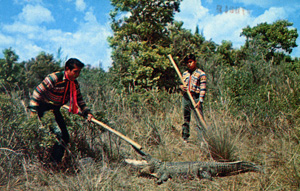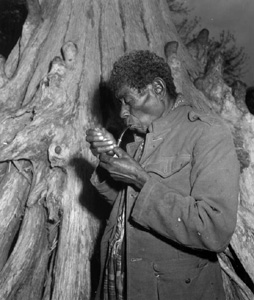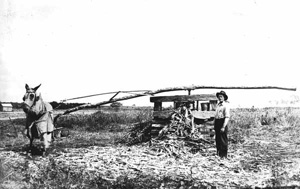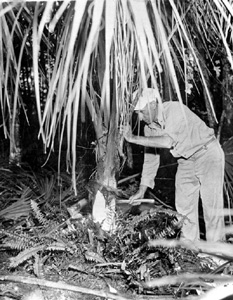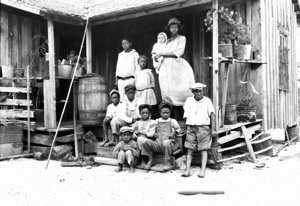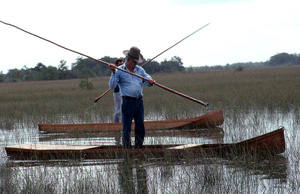Photo Exhibits
Photo exhibits spotlight various topics in Florida history, and are accompanied by brief text intended to place selected materials in historical context.
The Everglades in the Time of Marjory Stoneman Douglas
Seminoles hunting alligators
Image Number: PC1302
The first documented peoples in the Everglades were the Calusa and related cultures.
Decimated by disease, they were followed by the Florida Seminoles, who settled into South Florida during the Second and Third Seminole Wars.
While most of the Seminoles were relocated to the West by the Federal government in the mid-1800s, many stayed behind to make their home in the Everglades and along the Tamiami Trail.
Black Seminole in the Everglades (1952)
Image Number: C017188
Originally comprised of escaped slaves who ran to the Seminoles peoples, the Black Seminoles resided both in the Everglades as well as in the Indian territories in Texas and Oklahoma.
Farmer and mule grinding cane (1916?)
Image Number: SM0370
Yeomen farmers, often referred to as "crackers", settled in and near the Everglades in the late 1800s.
Harvesting palm for "swamp cabbage" (1950s)
Image Number: PR12568
Many of the native plants and animals provided food for people living near the Everglades.
Pictured is Everglades trail guide and long-time native George Espenlaub harvesting the heart of the sabal palm (swamp cabbage).
Family from the Everglades (ca. 1929)
Image Number: SM2424
Although there had been tourism and development there since the early 1900s, most of the Everglades was considered waste land because of its mosquitoes, lack of timber, and the perception that wetlands were "useless."
Most who lived there were poor farmers and laborers.
Glen Simmons on his glade skiff (1980s)
Image Number: FA2056
Simmons represents the continued cultural traditions of the Everglades that date back to the 1800s.
For more on Simmons as well as the Florida Folklife Program which has preserved many of these traditions, see the Florida Folklife Collection.

 Listen: The FolkFolk Program
Listen: The FolkFolk Program